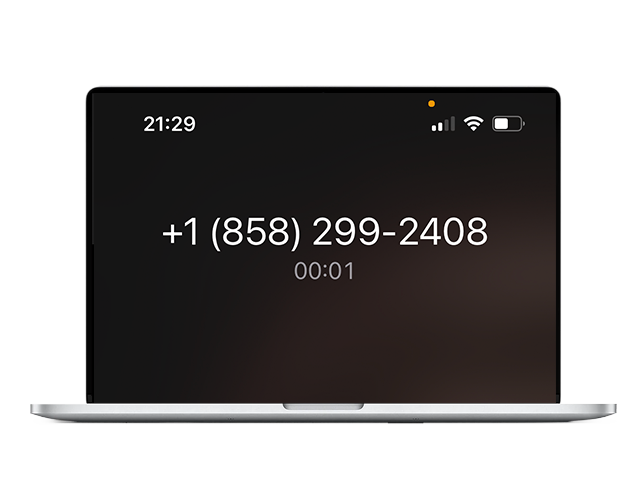How to build your own contact center
If you're running a business, chances are you need a contact center. A contact center is a centralized location where customer interactions and inquiries are managed. But what if you don't have the budget to outsource your contact center needs? In this blog post, we'll show you how to build your own custom contact center, from scratch. We'll cover the benefits of having a custom contact center, the components and infrastructure needed, and how to optimize your new contact center for maximum efficiency.

Photo by Markus Spiske on Pexels
Why build your own contact center.
A custom contact center can offer a number of advantages over a traditional call center, including increased flexibility, scalability, and customization options.
Flexibility: A custom contact center can be designed to fit the specific needs of your business. This means that you can tailor the features and functionality of your contact center to match the way you do business. For example, if you have a very high volume of calls during certain times of the day, you can design your contact center to handle this by adding additional lines or staffing during those times.
Scalability: A custom contact center can also be easily scaled to meet changing demands. For example, if your business experiences a sudden increase in call volume, you can quickly add additional lines or staff to accommodate this without having to make major changes to your infrastructure.
Customization: With a custom contact center, you also have the ability to customize the look and feel of your interface to match your brand identity. This includes everything from the color scheme and logo to the agent scripting and hold music.
The features of a custom contact center.Some common features that are available with a custom contact center include automatic call distribution (ACD), interactive voice response (IVR), call recording, real-time reporting, and integration with CRM systems.
Automatic Call Distribution (ACD): ACD is a feature that automatically routes calls to the next available agent based on criteria that you define. This ensures that each caller receives prompt service without having to wait on hold for an available agent.
Interactive Voice Response (IVR): IVR is a system that allows callers to interact with your contact center using their voice. For example, IVR can be used to give callers the option of speaking with sales, support, or billing – without having to wait on hold for an available agent.
Call Recording: Call recording allows you to record all incoming and outgoing calls for quality assurance or training purposes. This feature is often used in conjunction with real-time reporting so that managers can listen in on calls and see how agents are handling them.
Real-Time Reporting: Real-time reporting gives managers visibility into key metrics such as average handle time, abandoned calls, first call resolution rate, etc. This information can be used to identify areas where agents need more training or where processes need to be improved.
Integration with CRM Systems: Integration with CRM systems allows you to seamlessly transfer customer information between your contact center and your CRM database. This ensures that agents have the most up-to-date information available when speaking with customers.
The cost of a custom contact center.The cost of a custom contact center will vary depending on the features and functionality that you require. However, in general, custom contact centers tend to be more expensive than traditional call centers. This is due to the increased complexity of the infrastructure and the need for specialized staff.
That being said, the benefits of a custom contact center often outweigh the increased cost. For example, the flexibility and scalability of a custom contact center can help you save money in the long run by avoiding the need to make major changes to your infrastructure as your business grows. Additionally, the customization options available with a custom contact center can help you create a unique customer experience that builds brand loyalty and drives repeat business.
How to build your own contact center.
A custom contact center can be built with a variety of components, depending on the needs of the business. The most important components of a custom contact center are the following:
Telephony system: This is the heart of the contact center, and it allows customers to call in and agents to make outbound calls. There are many different types of telephony systems available, so it is important to choose one that will fit the needs of the business.
Computer telephony integration (CTI): This component allows the contact center to integrate with other systems, such as customer relationship management (CRM) software. CTI provides features such as screen pops, which display customer information on the agent's screen when a call comes in.
Automatic call distribution (ACD): This component directs calls to the appropriate agent based on criteria such as skillset or location. ACD can also provide features such as queueing, which holds calls in a virtual line until an agent is available.
Interactive voice response (IVR): This component allows customers to use their voice to interact with the contact center system. IVR can be used for tasks such as self-service or routing calls to the appropriate agent.
Reporting and analytics: This component provides data that can be used to measure and improve performance in the contact center. Reporting and analytics tools can track metrics such as average handle time and abandonment rate.
The infrastructure of a custom contact center.In order for a custom contact center to function properly, it must have a robust infrastructure in place. The three main components of the infrastructure are hardware, software, and networking.
Hardware: The hardware includes all of the physical equipment needed for the contact center, such as phones, computers, and servers. It is important to choose high-quality hardware that will be able to handle large volumes of traffic and data.
Software: The software includes everything from the operating system to applications used by agents and customers. It is important to select software that is compatible with the hardware and easy to use.
Networking: The network connects all of the hardware and software components together so they can communicate with each other. A good network will have enough capacity to handle high volumes of traffic without experiencing any delays or disruptions.
The staff of a custom contact center.A custom contact center cannot function without a team of dedicated and skilled staff members. The three main types of staff needed for a custom contact center are agents, managers, and IT personnel.
Agents: Agents are the front line of the contact center, and they are responsible for interacting with customers. They need to have strong communication skills and be able to resolve customer issues quickly and efficiently.
Managers: Managers oversee the operations of the contact center and make sure that everything is running smoothly. They need to be able to effectively manage people and resources, as well as handle customer complaints or escalations.
IT personnel: IT personnel are responsible for maintaining the hardware, software, and networking components of the contact center. They need to have a strong understanding of technology and be able to troubleshoot any problems that may arise.
How to optimize your custom contact center.
A custom contact center can be optimized in many ways to suit the specific needs of your business. Some best practices for optimizing a custom contact center include:
-Analyzing customer interactions and identifying areas for improvement
-Establishing clear goals and KPIs for the contact center
-Defining processes and procedures for optimal performance
-Investing in quality management tools and training staff on their use
-Continuously monitoring performance and making adjustments as needed
The latest technologies for custom contact centers.To stay ahead of the curve, it is important to keep up with the latest technologies available for custom contact centers. Some of the latest technologies that can be used to optimize a custom contact center include:
-Intelligent call routing: This technology uses data and analytics to route calls to the most appropriate agent based on skills, availability, and other factors.
-Interactive voice response (IVR): IVR systems can automate simple tasks such as greeting callers and collecting information. This frees up agents to handle more complex tasks.
-Call recording and quality monitoring: Call recording enables businesses to review calls and identify areas for improvement. Quality monitoring tools can be used to score calls and provide feedback to agents.
-Chatbots: Chatbots can handle simple customer queries 24/7, freeing up agents to handle more complex issues.
The future of custom contact centers.The future of custom contact centers is likely to include even more advanced technologies that further automate simple tasks and enable businesses to provide an even higher level of customer service. Some examples of emerging technologies that could be used in custom contact centers in the future include:
-Virtual reality: Virtual reality could be used for training new agents or providing customers with immersive experiences such as product demonstrations or virtual tours.
-Augmented reality: Augmented reality could be used to provide agents with real-time data and assistance with complex tasks such as troubleshooting.
-Natural language processing: This technology can be used to automatically transcribe calls and analyze customer sentiment.
Conclusion
Building your own custom contact center can be a great way to improve customer service and support. There are many benefits to having a custom contact center, including the ability to tailor the services offered to your specific needs, improved efficiency and cost-savings. To build your own custom contact center, you'll need to consider the components, infrastructure and staffing required. By following best practices and utilizing the latest technologies, you can optimize your contact center for maximum performance.
